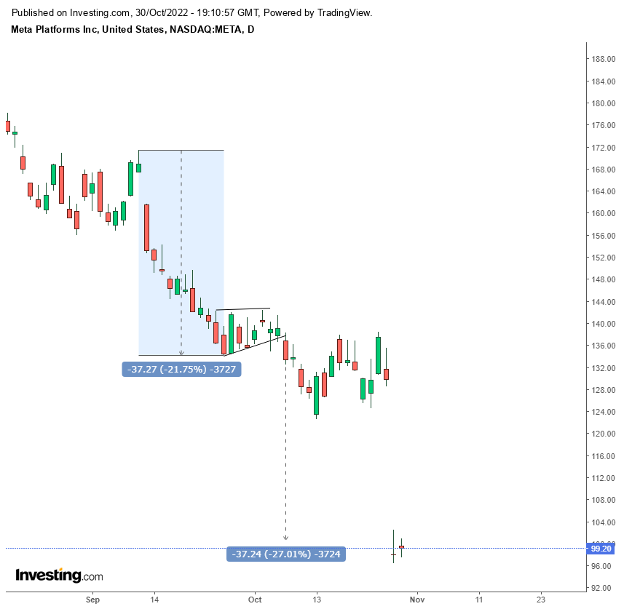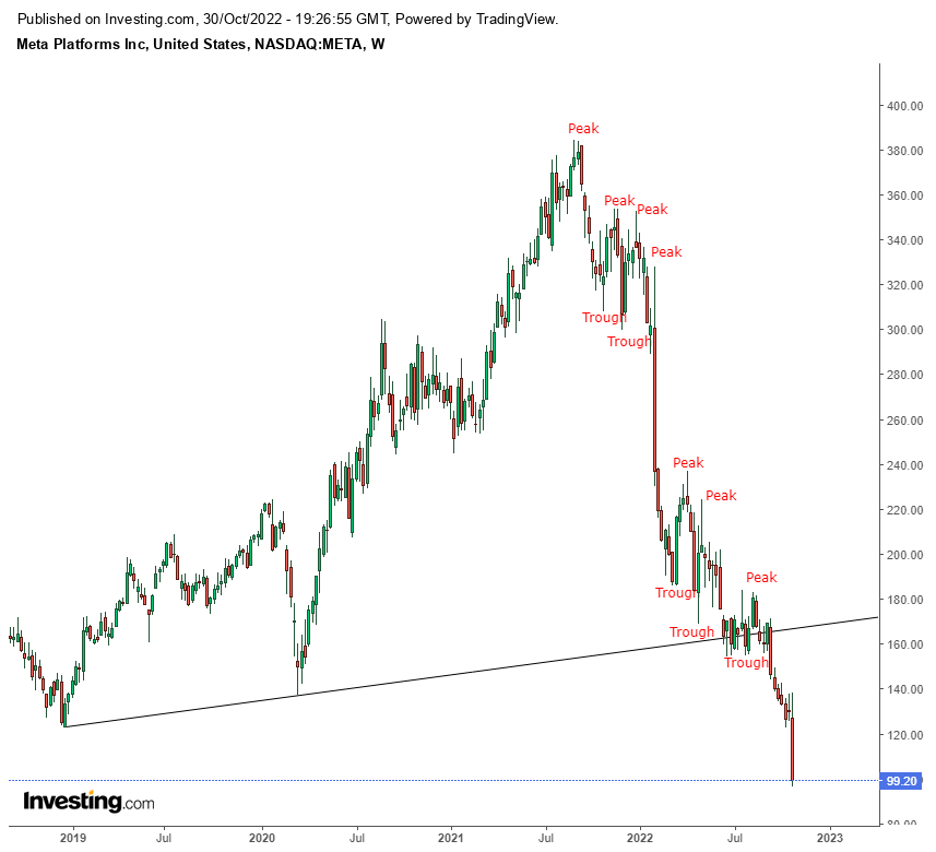It's been a bad 14 months since Sept. 1, 2021, when Meta Platforms (NASDAQ:META) hit an all-time high. The company fell with the rest of the market, with Wall Street logging the year's worst month. Investors were expecting high inflation, spiking yields, a fizzling economic recovery and Chinese high corporate debt levels.
Facebook, as it was called back then, was suffering from yet another scandal – a whistleblower who revealed "The Facebook Files," showing that the company knew but didn't fix "ill-effects" on its platform.
However, the real hemorrhaging was on the company's transition from Facebook, a social media platform cool 15 years ago, to the metaverse, the next step in tech social evolution. In February, the company posted a rare 8% YoY profit decline, sending the stock 26.4% lower in a single day. The company was spending billions in the hope of making trillions. CEO Mark Zuckerberg shoved all his chips into this deal. It will make or break him. However, even if the chairman of the once most successful company on Wall Street is successful, it will be years before investors get a return on investment.
But the losses didn't stop there. The company dropped 9%, halving its value YTD on July 28 after posting its first-ever quarterly revenue drop in second-quarter earnings. Zuckerberg warned that the company is preparing for a slowdown, on weaker advertising demand, after Meta already took a hit with Apple's (NASDAQ:AAPL) privacy changes. Meta stated these changes cost the company $10 billion in revenue this year.
Finally, Meta plunged another 24.5% on Oct. 26 to a six-year low, reporting its second quarterly decline in a row. The company's Reality Labs division, which houses its VR headsets, lost more than $9 billion in the first three quarters.
The VR has been ridiculed as being lame, and users fled. The stock has been literally spiraling. In the only time I can recall in my career, I've seen an analyst cry and apologize for recommending a stock. CNBC "Mad Money" host Jim Cramer apologized to his followers for trusting Zuckerberg.
But is this a good time to buy?
Morgan Stanley downgraded the stock last Thursday to $105 from $205, citing higher continued spending as the company builds its AI space, almost 5% more than its current $99.20 price. Cowen downgraded to $135 from $205, a near-36% climb. Finally, Bank of America lowered its target to $136 from $150, a sharper reduction than Cowen's relative to its starting point, but a similar current target.
When investment banks provide targets, they do so within a 12-month time frame. That is, they expect the price to get there some time during that period. Fundamental analysts attempt to determine the company's value, then expect the corresponding shares to catch up, eventually, but they have no idea about the timing. Technical analysis, however, attempts to determine the supply and demand of the stock and, based on the weight of the evidence, expects a statistical outcome within a time frame. Based on those principles, I had given bearish calls on META – in opposition to fundamental analysts – on Aug. 30, targetting $130, when the stock was trading at $159.17, which I reiterated Sept. 14, deepening my target to $125, when the price was $153.13.

Source: Investing.com
Friday's 24.5% selloff realized the price's rising flag's implied $37 move lower. So, if you followed the fundamental analysts above, you'd buy now and wait for the price to get there.

Source: Investing.com
However, if you want to incorporate technical analysis, the only discipline that incorporates timing, you'd wait for an ascending series of peaks and troughs, which would demonstrate a sustainable rising trend. You'd also be mindful of that nasty trendline from the December 2018 low, above the aforementioned targets, providing a potential short if the price bounces back there.
Disclaimer: The author has no position in the instruments mentioned in this article.
